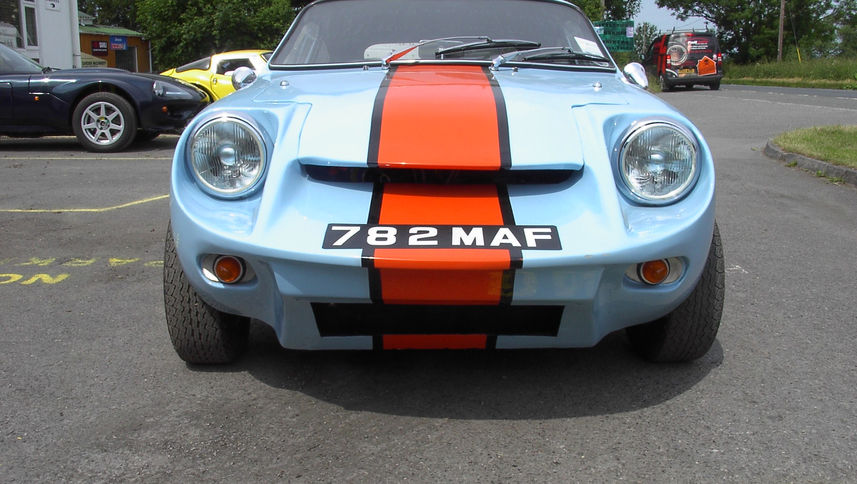
Mini Marcos

The first public appearance of the Mini Marcos was in the hands of Geoff Mabbs at the Castle Combe Circuit in 1965. From the back of the field Mabbs charged his way through in appalling conditions to finish in first place in the car's first ever race. This was just the start of an incredible journey for the ever popular Mini Marcos.
During 1966 the Mini Marcos was introduced at Earls Court. A fibreglass-bodied car utilising trusted Mini mechanicals, including the front wheel drive engine/transmission unit. It sold extremely well, despite being described as “ugly as Hell” by one correspondent. Subsequently the Mini Marcos earned its spurs and reputation on the track, especially at Le Mans in 1966 when it was the only British car to complete the 24-hour race. Over the years the Mini Marcos continued to earn its place in the racing history books, it still holds four National Land Speed Records, has twice won the Mod Sports Championship and its latest accolade to win the 1991 Liege-Rome-Liege rally for Sports Cars beating Porsche, Alfa Romeo, Mini Cooper and Austin Healey. The car still being extremely popular for both race and road use throughout the world.
The Mini Marcos was so popular in the 60's that some cars were built under license in both South Africa and Ireland and continued to be sold in component form in the UK until Marcos ran into financial problems in 1972.
The Company and assets were bought by Fraternal Estates part of the Rob Walker group of companies, and the Mini continued in production in its MK IV version, all be it in component form in Westbury until August 1975. The Mini project was then sold to Harold Dermott of D & H Fibreglass Techniques. Harold continued to produce the Mini alongside the Midas until D & H Fibreglass Techniques was sold in 1989, and, under the terms of the agreement the moulds, tools, jigs and production rights reverted back to Marcos in Westbury.
In April 1991, on the 25th Anniversary of this amazing little car, the Mini Marcos reappeared as the MK V which boasted subtle body modifications including a front spoiler. To help meet a more competitive market other modifications included a wider track, 13" wheels, wind up windows, improves door locks etc....and optional extras such as a walnut dashboard and fabric sunroof. For the first time the MK V was produced as a fully built new car for the Japanese market, new Mini's were purchased from the local dealer and all the parts transferred to the Marcos bodyshell. The MK V continued to be sold in the UK in component form until 1995 when demand ceased.
In all over 1300 cars were produced from 1966 to date, making it the most produced model of the Marcos range.
After a ten-year gap interest in the Mini Marcos was strong enough for Marcos Heritage to re-launch the car as the Heritage MK VI in component form together with a competition / track day car - the MK VI GT, which is available to this day. The Mini Marcos name was dropped due to bullyboy tactics from BMW over the use of the name Mini.








